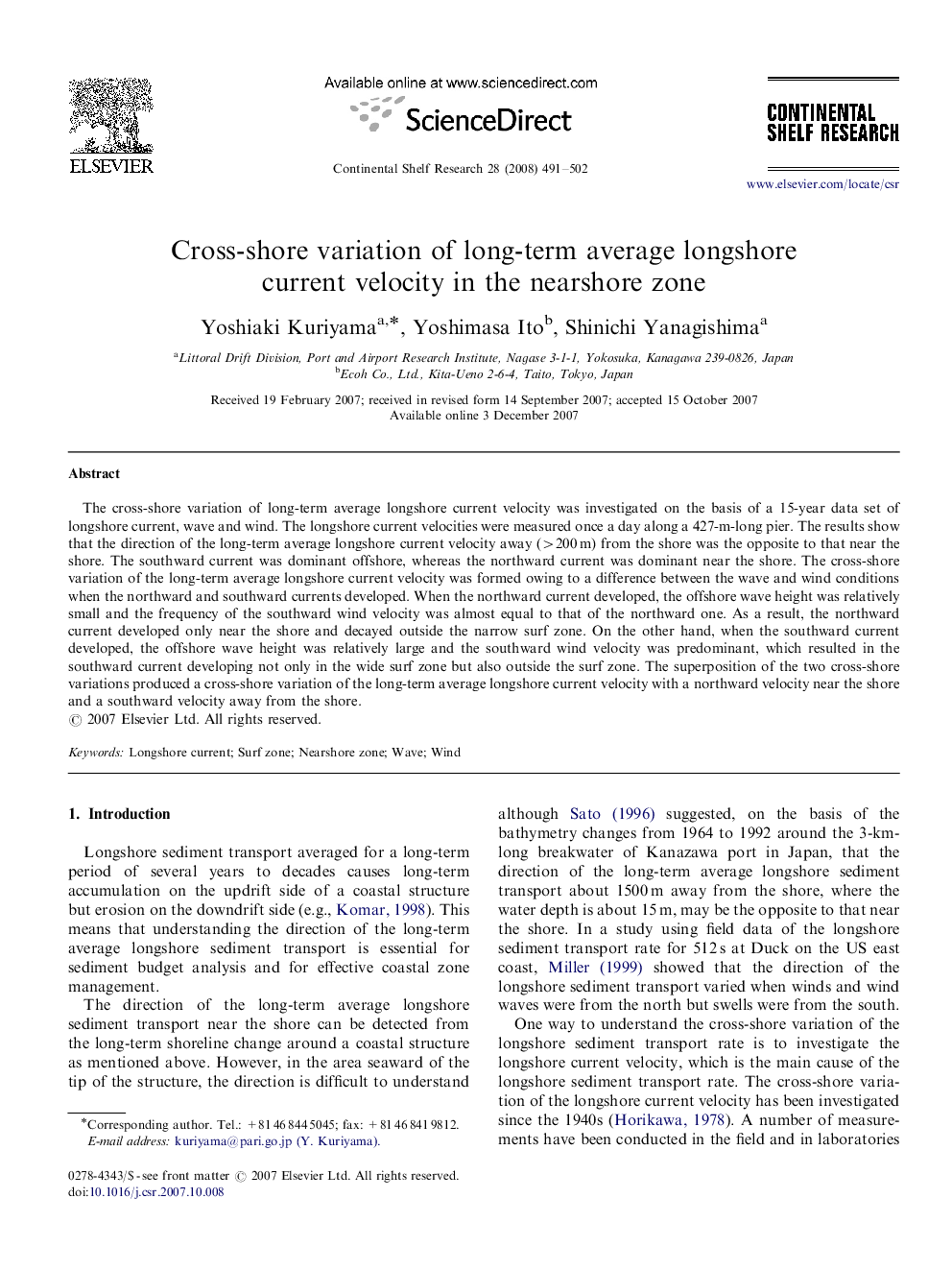| Article ID | Journal | Published Year | Pages | File Type |
|---|---|---|---|---|
| 4533595 | Continental Shelf Research | 2008 | 12 Pages |
The cross-shore variation of long-term average longshore current velocity was investigated on the basis of a 15-year data set of longshore current, wave and wind. The longshore current velocities were measured once a day along a 427-m-long pier. The results show that the direction of the long-term average longshore current velocity away (>200 m) from the shore was the opposite to that near the shore. The southward current was dominant offshore, whereas the northward current was dominant near the shore. The cross-shore variation of the long-term average longshore current velocity was formed owing to a difference between the wave and wind conditions when the northward and southward currents developed. When the northward current developed, the offshore wave height was relatively small and the frequency of the southward wind velocity was almost equal to that of the northward one. As a result, the northward current developed only near the shore and decayed outside the narrow surf zone. On the other hand, when the southward current developed, the offshore wave height was relatively large and the southward wind velocity was predominant, which resulted in the southward current developing not only in the wide surf zone but also outside the surf zone. The superposition of the two cross-shore variations produced a cross-shore variation of the long-term average longshore current velocity with a northward velocity near the shore and a southward velocity away from the shore.
